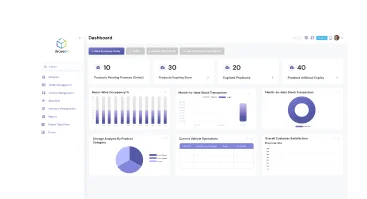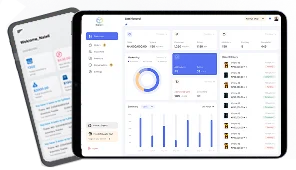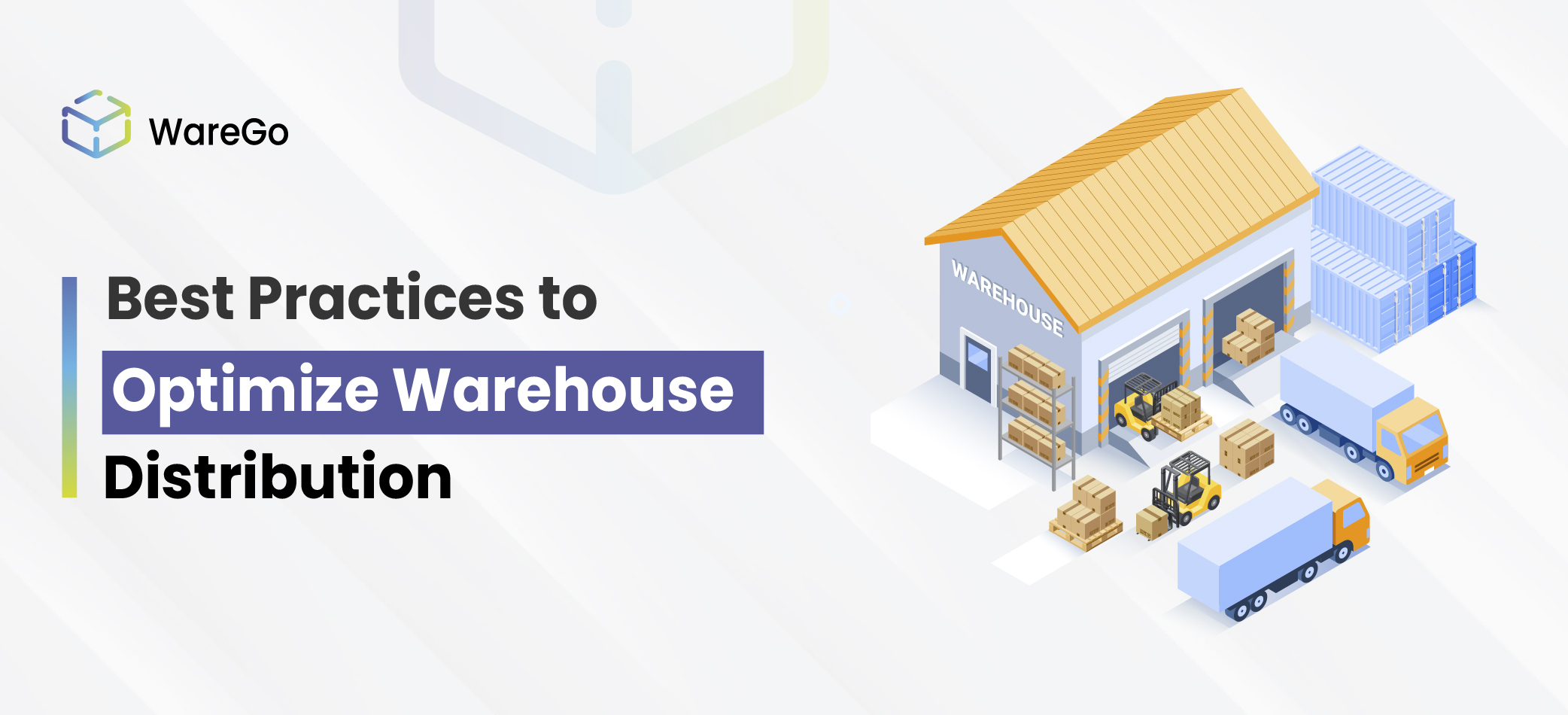
Warehouse distribution largely happens behind the scenes. However, it has a direct impact on customer experience and brand image. Efficient warehouse distribution is critical for fast and precise order fulfillment.
With ecommerce growing by leaps and bounds each year, you will need a robust warehouse distribution system to keep ahead of evolving demand.
Warehouse operations like picking, packing, receiving, storing, and shipping require a lot of time, money, and effort. Hence, it makes sense, in certain cases, to outsource these time-consuming processes to 3PL service providers.
However, whether you rely on 3PL or your in-house capabilities, one thing is certain: you will need a modern warehouse management software that helps you manage inventory and 3PL for fast order processing and timely shipping.
We will explain in simple words what warehouse distribution is all about. You can understand its benefits, drawbacks, how it’s done, and so on. This will give you the information you need to inform your warehouse strategy.
Table of Contents
What is Warehouse Distribution?
Warehouse distribution is the organized storage, processing, and shipping of inventory. It enables the efficient routing of goods from the warehouse to customers like consumers, retailers, or wholesalers.
Warehouse distribution may rely on various kinds of warehouses.
In traditional warehouses, it is not unusual to store goods for relatively long time frames.
Distribution centers or warehouses are different because they focus on the rapid movement of goods from the warehouse to customers. They try to minimize the storage time of inventory for cost-saving. Hence, these centers are designed to facilitate rapid and efficient shipping of goods from supply partners to customers.
The warehouse distribution center enables efficient receiving of goods, highly organized storage of inventory for quick retrieval, fast and precise order processing, and quick shipping to end users.
The workflows and strategies used by distribution and fulfillment centers play a key role in efficient operations. Hence, cross-docking, product mixing, and advanced inventory management techniques are commonly employed to this end.
For direct-to-consumer order fulfillment, these warehouses depend on warehouse distribution software to sync inventory and process orders across multiple sales channels.
Warehouse Distribution Logistics – Why it Matters for Supply Chain Management
For a high-performance supply chain, you need to seamlessly coordinate each step of your logistics workflow. This, in turn, depends strongly on how well optimized warehouse operations are. Receiving, processing, and fulfilling orders should be fully streamlined for optimized warehouse distribution logistics.
Warehouse distribution organizations allow businesses of all kinds to cut operational costs, reduce errors, and reduce delays. This ensures high customer satisfaction through the consistent and smooth flow of goods throughout the supply chain.
Key Factors in Warehouse Distribution System
Here are some factors in the warehouse distribution system that have a strong impact on the efficiency of your supply chain:
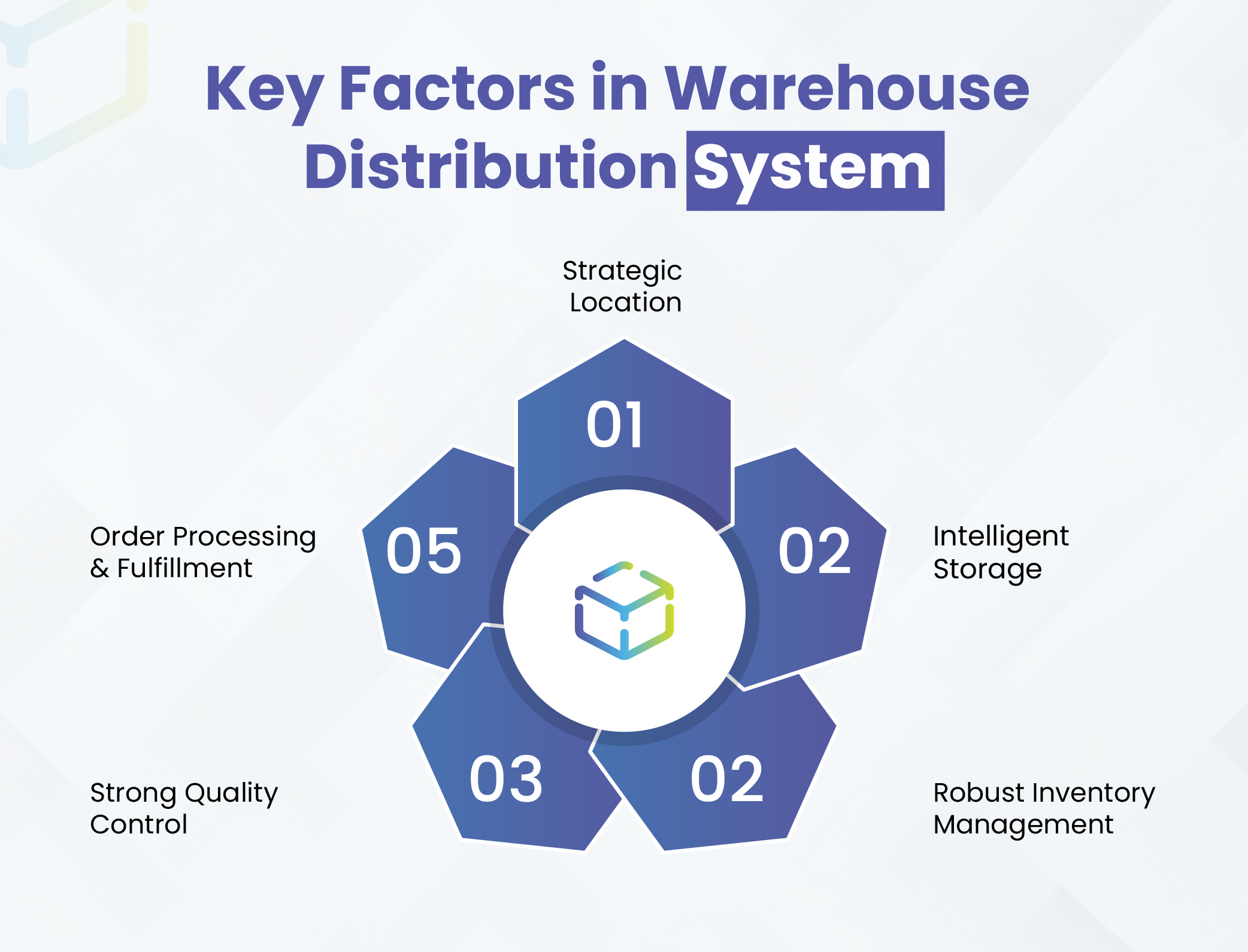
Strategic Location
Warehouse location often has an outsized effect on the bottom line of most businesses. This is why many high-performance organizations ensure that their warehouses are located around highways, seaports, and airports.
A key advantage of this is that customers close to such centers can receive their goods in shorter time frames without delays. This means a better customer experience, due to which your patrons trust in your brand and keep coming back for more. It also means that your business saves a lot of time and money on shipping.
Intelligent Storage
Storage is a key part of the warehouse distribution workflow. Modern distribution centers implement advanced methods such as mezzanine floors, multi-tier racks, pallet racking, and industrial shelving and slotting for good inventory management.
As a result, fast-moving products that bring in the most revenue are within easy reach of your workers. Hence, your warehouse can execute orders faster with smart inventory organization.
To keep their inventory in the best possible condition, distribution centers may deploy temperature control to prolong the shelf life of perishable stock.
As a result, modern storage sites allow for faster order processing, quick shipping, and accurate deliveries that meet and exceed consumer expectations.
Robust Inventory Management
Modern distribution centers monitor stock information in real-time to maintain optimal inventory levels. This minimizes the risk of stockouts and overstocking. As a result, businesses can respond more effectively to changes in demand. They can prevent common problems like lost sales, unfulfilled orders, unsold goods, and high storage costs.
Effective inventory management is possible with a powerful WMS that has advanced features for controlling thousands of SKUs and multiple locations in real-time.
Our friendly experts will be delighted to explain how WareGo can streamline your business.
Start My FREE Consultation!Strong Quality Control
At all points of the supply chain, businesses implement strong quality control to make sure that substandard goods are kept out of the supply chain. As soon as goods are received, specialists immediately check these items carefully by:
- Confirming that goods have precise labels
- Ensuring that goods are not physically damaged
- Making sure that all goods are compliant with trade and safety rules
To maintain the highest quality for fragile goods, these warehouses will maintain a tightly controlled internal environment, including temperature, humidity, and lighting.
Order Processing and Fulfillment
After receiving the customer order, the distribution center will fulfill the order promptly via timely picking, packing, and shipping processes. These processes need to be streamlined with warehouse management software for fast, precise, and smart fulfillment.
Get your free demo to see our cutting-edge platform live in action.
Start My FREE Demo!Distribution Warehouse Best Practices
Warehouse distribution goes way beyond just packing shelves with inventory. It involves optimizing everything, including inventory storage, for faster operations.
These are the best practices that you can implement in your distribution warehouse:
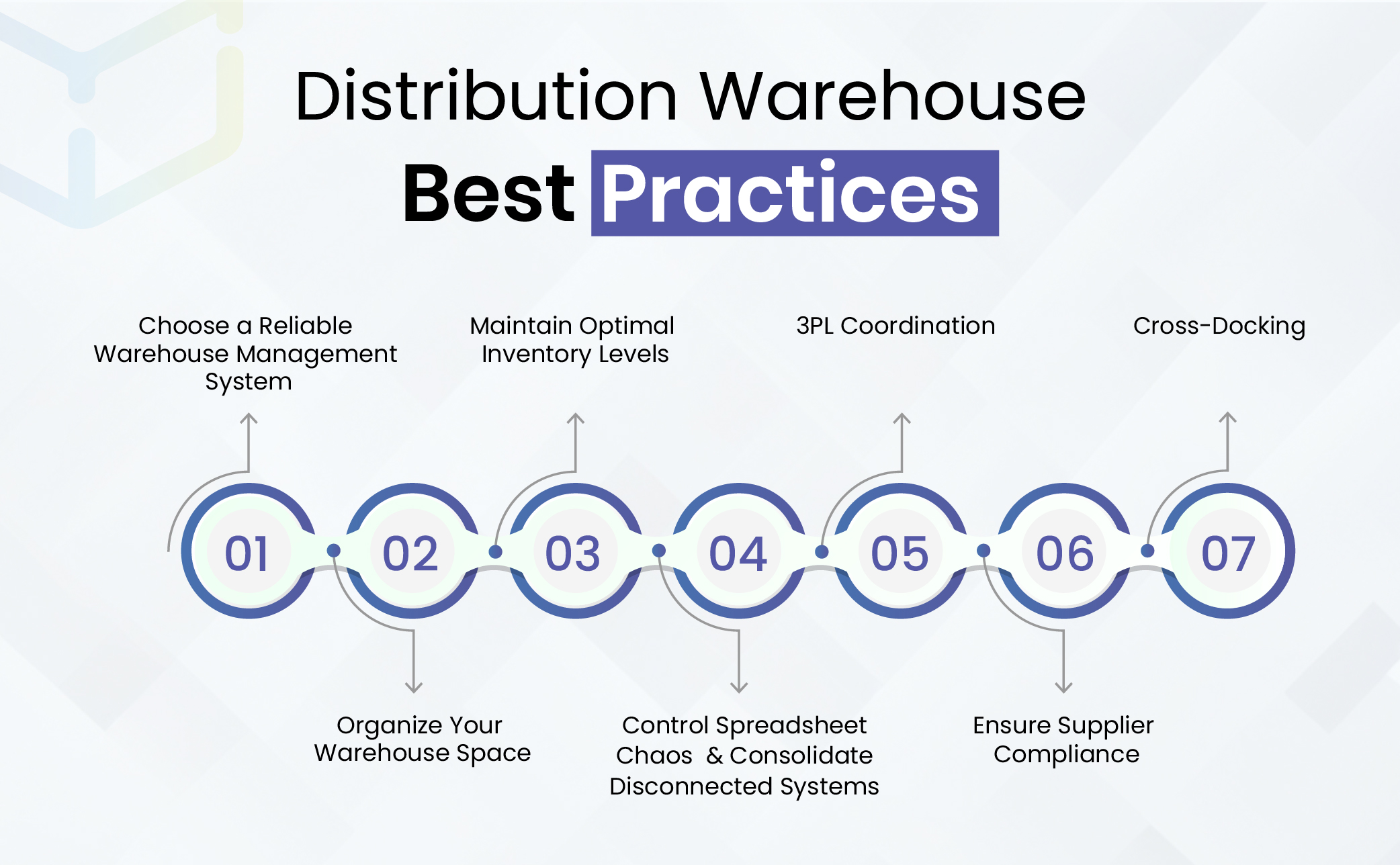
Choose a Reliable Warehouse Management System
Selecting a high-performance warehouse management system is not an option. It is an absolute necessity for those who want to survive and thrive in this era of ever-growing competition.
An advanced WMS will automate warehouse tasks of all sorts, including shipping management, order processing, and inventory tracking in real-time. The system is instrumental for accelerating warehouse operations, reducing costly errors, and reducing manual labor.
WareGo’s system gives you access to real-time information on individual SKUs, shipment tracking, and order status for all distribution centers in your supply chain. In short, it gives you complete visibility across the length and breadth of your logistics network so you can make the best data-driven decisions. Thanks to accurate real-time information, you can avoid the guesswork and make the right management choices with full confidence.
With regular tracking, you will have a good idea of what works and what doesn’t. This is vital for growing your business.
Is WareGo the right fit for your business? Find out with a 100% FREE trial.
Start My FREE Trial!Organize Your Warehouse Space
For optimal performance, your warehouse space needs to be intelligently organized. A well-designed warehouse floor that is quicker and easier to navigate enables faster order fulfillment and higher productivity.
You can use ABC classification to ensure that highly demanded goods are kept closer to your workers. This will reduce average travel time, allowing for faster picking and thus higher fulfillment rates.
You can also dynamically allocate space to inventory based on demand. For example, seasonal gifts can be kept within easy reach of your workers during the holiday season. But once the season is over, you can safely move these goods deeper inside and keep them on higher shelves since demand for them will go down. Other goods with higher current demand should be kept within easy reach of your workers.
Maintain Optimal Inventory Levels
There are several techniques for optimizing your inventory. However, they all ultimately boil down to one main idea – optimal levels. Keep just enough inventory at hand to fulfill demand, but not any more than that. This will reduce stockout risk and thus prevent lost sales. It will also prevent overstocking, unsold goods, and high holding costs.
WareGo’s WMS is engineered to mitigate both stockouts and overstocking. It avoids stockouts through real-time tracking, automated reordering points, low stock alerts, and so on. AI-based smart demand forecasts and inventory planning tools analyze your previous customer demand patterns to suggest the right stock level that will prevent overstocking and unsold goods.
Our friendly experts can outline in simple words how WareGo helps.
Chat With Us!Control Spreadsheet Chaos and Consolidate Disconnected Systems
While spreadsheets offer a convenient short-term solution for tracking and managing daily operations, they quickly become unmanageable as orders and SKUs increase.
Your inventory system should work for you, and not the other way around. When you face endless manual work and struggle to make sense of what’s going on in your spreadsheets, then it’s time to consider an enterprise WMS solution. This powerful system can automate tedious tasks to free you up. It can also provide instant reports, deep analytics, and aggregate data so you know exactly what’s going on.
Also, the WMS can sync your inventory data seamlessly with different business systems (CRM, ERP, accounts, ecommerce platforms, online marketplaces, shipping carriers, 3PL, and more). You can thus avoid manual data entry and consequent errors and delays.
These are just some reasons why savvy brands rely on advanced WMS solutions instead of spreadsheets and legacy systems. The result is smoother, faster, and smarter operations where you achieve more with less effort.
3PL Coordination
While running your own warehouse can work in many ways, you may need to use a hybrid approach where you team up with 3PL service providers who can extend your warehouse operations. You may even need to outsource all warehouse operations to specialists.
Whatever route you take, you will have a strong need for 3PL service providers. WareGo’s 3PL support lets you monitor 3PL partner performance, collaborate effectively in real-time, plus find the lowest rates and best terms.
Strong 3PL coordination can be a game-changer for your order fulfillment strategy. Even by outsourcing warehouse distribution either partially or 100%, you can still maintain control and visibility thanks to 3PL functionality.
Ensure Supplier Compliance
You will want to collaborate with specialist 3PL suppliers who can meet your standards of fulfillment. To ensure this and the best possible 3PL service quality, you need to set up a supplier compliance program. These are the terms and rules that your supply partner is bound to follow. You can stipulate, for example, same-day shipping, delivery SLAs, shipping requirements, labelling, packaging, and so on.
By teaming up with responsible suppliers who can guarantee you the best 3PL service according to your terms and conditions, you can maintain and achieve fulfillment excellence and high customer satisfaction.
Cross-Docking
Cross-docking simply means unloading received goods directly into delivery trucks for instant delivery without storing them in your warehouse. This represents the fastest possible fulfillment and the ultimate implementation of just-in-time inventory.
As you will realize, this is easier said than done. To control such time-sensitive shipping operations with full precision, you will need a WMS that offers built-in support for cross-docking, such as WareGo. The system has all you need to manage this complex process smoothly.
Use WareGo to Boost Warehouse Distribution
To significantly enhance your fulfillment strategy and warehouse efficiency, you must pay close attention to your business model, storage requirements, and shipping needs. But no matter what strategy you settle for, WareGo has everything you will need to implement your operational plan since it has the full suite of tools to control your inventory, processes, and shipping effectively.
WareGo’s order management system lets you track stored inventory and shipped goods in real-time. Shipping route optimization speeds up deliveries. Inventory synchronization across all channels lets you expand your multichannel strategy while achieving exceptional operational efficiency.
3PL support lets you coordinate seamlessly in real-time with your supply chain partners so you can implement just-in-time inventory as well as cross-docking with ease. Shipping carrier integrations let you find the best shipping rates and terms to maximize profit margins and speed up fulfillment.
Is WareGo the right fit for your business? Find out with a 100% FREE trial.
Start My FREE Trial!FAQs
What is distribution in warehousing?
Distribution in warehousing means managing the efficient movement of goods from the warehouse to the end user, retailer, or wholesaler.
Here are the key functions involved in warehouse distribution:
Order Fulfillment: Workers pick up the required item, pack it, and send it for delivery.
Fast Processing: Goods should be removed from storage as quickly as possible to minimize storage time and reduce holding costs.
Strategic Routing: Route and delivery schedules are optimized for rapid and precise fulfillment.
Key Services: Receiving, putaway, sorting, picking, packing, kitting, labelling, and processing returns are some key processes involved.
What is an example of a distribution warehouse?
Walmart Regional Distribution Center is an example of a distribution warehouse. Amazon and ShipBob are also well-known for their futuristic high-throughput distribution warehouses.
What are the four pillars of a warehouse?
These are the four pillars of a warehouse that directly influence productivity.
Space: organizing the limited warehouse space optimally is crucial for fast item picking, reduced worker travel time, and fast order processing.
Labor: Careful management of labor is necessary for good warehouse performance. Training the labor force for safety and productivity also matters.
Equipment: Scanners, forklifts, conveyers, and other warehouse equipment should be maintained regularly to minimize equipment breakdown, downtime, and delays.
Information: Managing warehouse data through a modern WMS solution is paramount for achieving high performance.
What are the three types of warehouses?
Here are the three types of warehouses.
Storage Warehouse: Traditional warehouses store raw materials and finished goods for relatively long time frames. Hence, inventory turnover is low.
Distribution Centers: These high-throughput logistics hubs minimize inventory storage timeframes to achieve high inventory turnover, productivity, and fast order fulfillment. Hence, inventory turnover is high. These centers normally transfer goods to retailers, wholesalers, and other businesses.
Fulfillment Centers: These logistics centers specialize in rapid order execution to ship goods to individual customers as fast as possible. Inventory turnover is very high.
